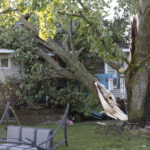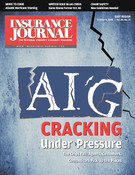The 10 tropical storms and hurricanes that ripped through the Atlantic and Caribbean during this busy hurricane season savaged Haiti, Cuba and the U.S. Gulf coast, and conditions are now ripe for more.
Residents of the Atlantic-Caribbean danger zone should not let down their guard, despite a brief lull in the action following Tropical Storm Josephine’s demise several weeks ago and Hurricane Ike’s strike on the Texas coast, experts said.
“Conditions are still favorable for hurricanes. People really need to stay on their toes,” said Gerry Bell, the lead hurricane season forecaster for the U.S. National Oceanic and Atmospheric Administration.
Forecasters had predicted the season, which runs through Nov. 30, could produce up to 18 cyclones, and the factors that contribute to the formation of hurricanes are still in place.
Water in the Caribbean and Atlantic is warmer than usual by 33 to 35 degrees Fahrenheit , Bell said. Hurricanes like warm water.
Wind shear is relatively low.
El Nino, the eastern Pacific warm water phenomenon that can dampen Atlantic storm formation, has not developed.
“Through October 15th I would not let my guard down on the (U.S.) eastern seaboard at all,” AccuWeather forecaster Joe Bastardi said, predicting another three to five storms. “Between the 25th (of September) and 15th of October the Caribbean will light up, but first, something may form off the Carolinas,” he said.
Six consecutive Atlantic tropical storms and hurricanes hit the U.S. from late July to mid-September, causing billions of dollars in damage. Four in a row swamped Haiti, killing hundreds of people. Gustav and Ike crushed Cuba before hitting the U.S. Gulf Coast.
There is no comparison yet to 2005, the all-time record-breaker with 28 storms including Hurricane Katrina On Sept. 18 of 2005, Rita formed. It was the 17th storm of the season and eventually became a 180 mph monster, one of the strongest hurricanes in history.
But not even in 2005 did six storms in a row hit the U.S. The U.S. National Hurricane Center says that so far it has not found another year since records began in 1851 in which the U.S.was hit by six tropical cyclones in a row.
The tendency to target shores is partly due to the atmospheric conditions that steer hurricanes. In some years, many of the storms that charge across the ocean eventually curve harmlessly northward without reaching the U.S.
“We’ve had an extensive area of high pressure in the middle and upper atmosphere that has helped to steer the hurricanes west at lower latitudes,” Bell said. “They have not recurved into the Atlantic.”
Topics Catastrophe Natural Disasters USA Hurricane
Was this article valuable?
Here are more articles you may enjoy.


 Death at Universal’s Orlando Resort Roller Coaster Ruled Accidental
Death at Universal’s Orlando Resort Roller Coaster Ruled Accidental  One of Highest Property Claims Severity Recorded in Q3 on Low Volume, Says Verisk
One of Highest Property Claims Severity Recorded in Q3 on Low Volume, Says Verisk  Insurance Industry ‘Megadeals’ Dominate 2025, Says PwC
Insurance Industry ‘Megadeals’ Dominate 2025, Says PwC  Fifth La Niña in Six Years to Disrupt Crops and Supply Chains
Fifth La Niña in Six Years to Disrupt Crops and Supply Chains 


